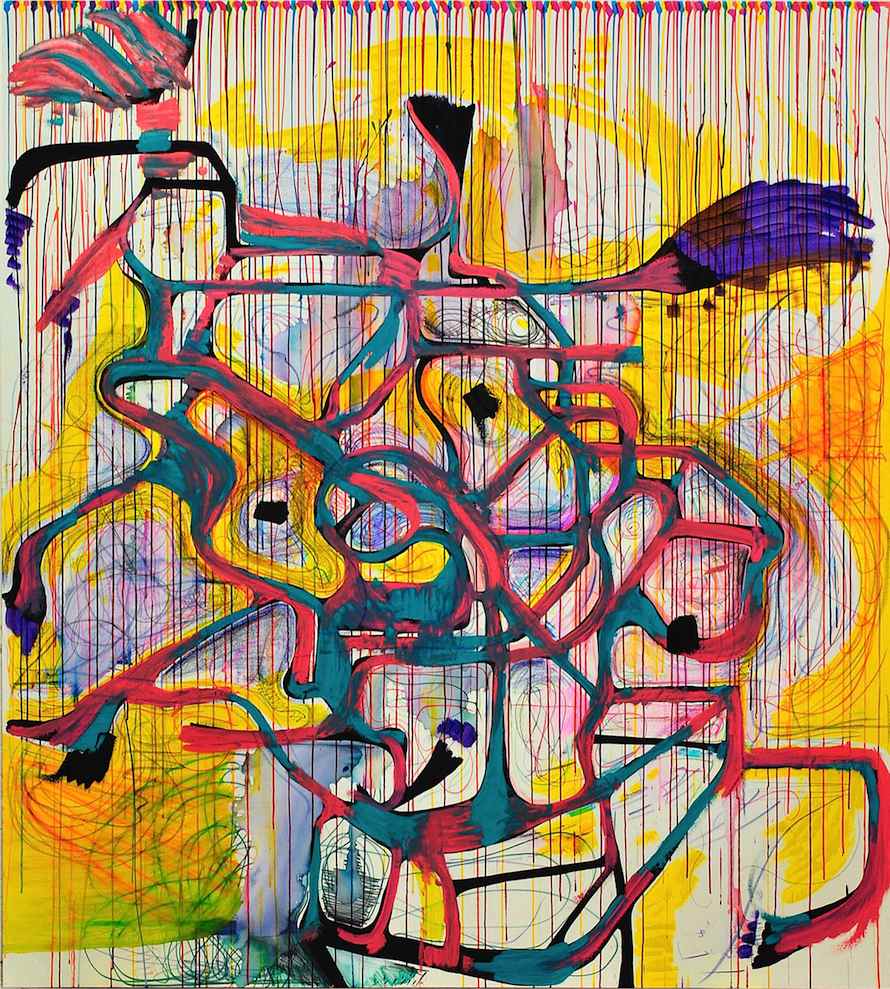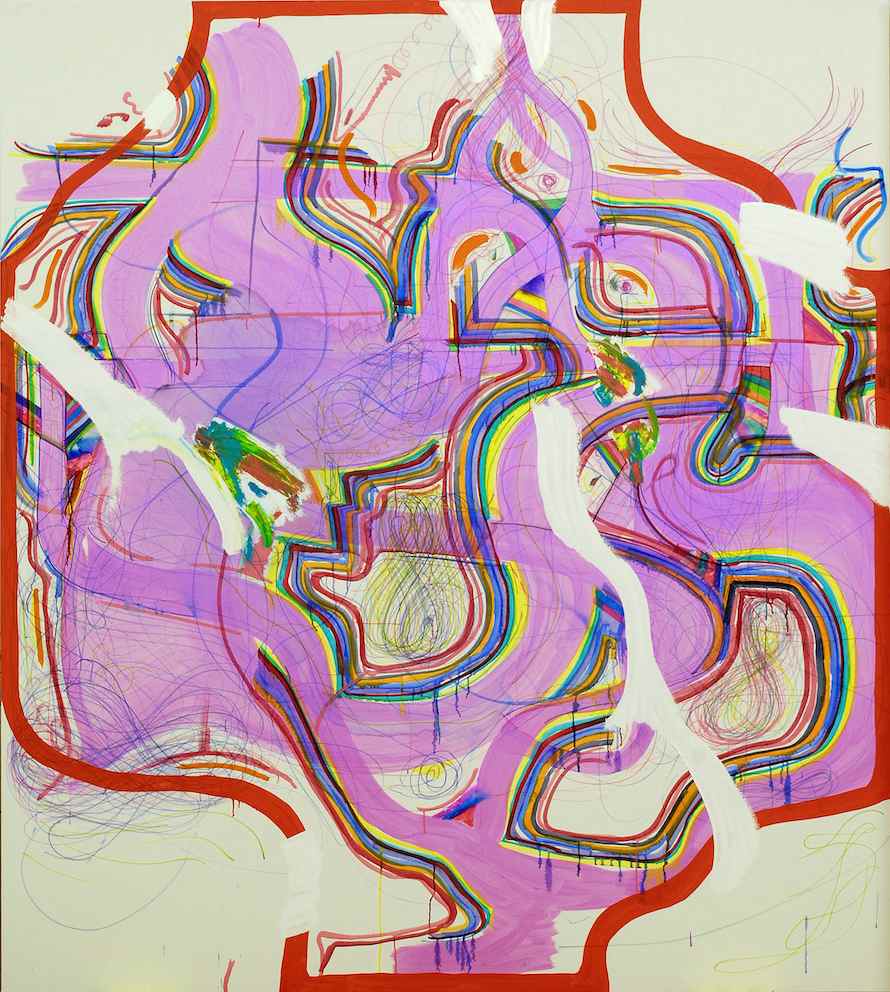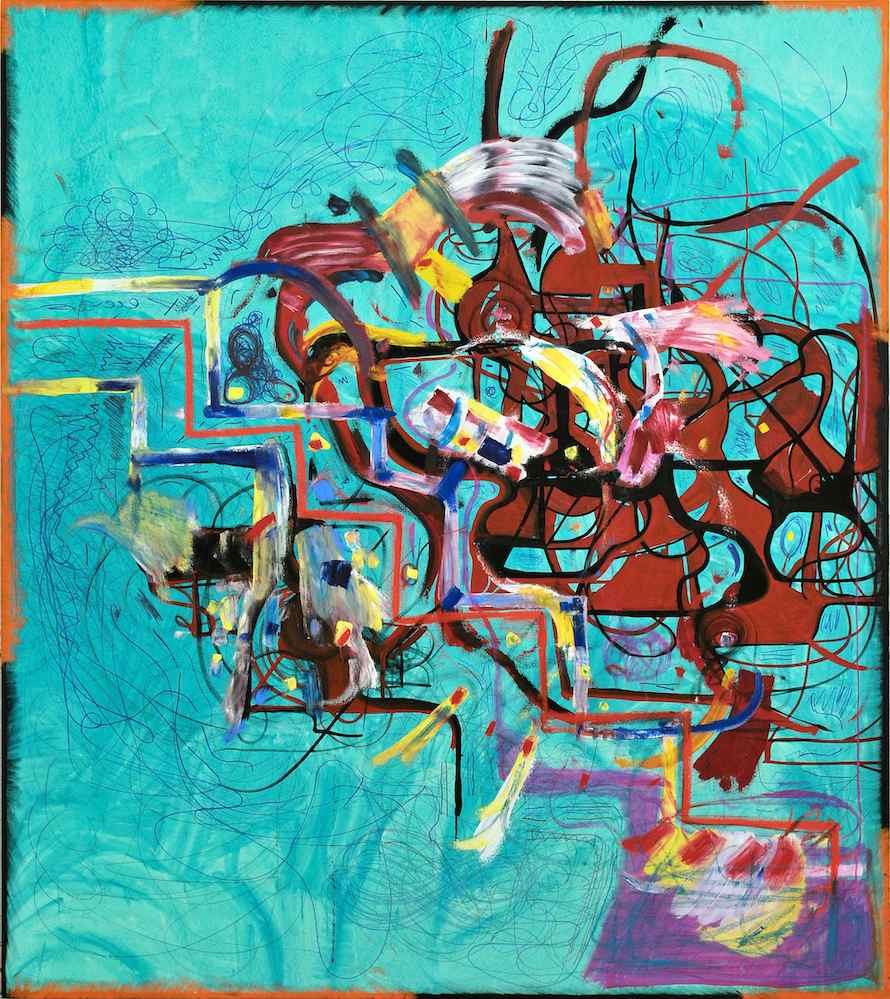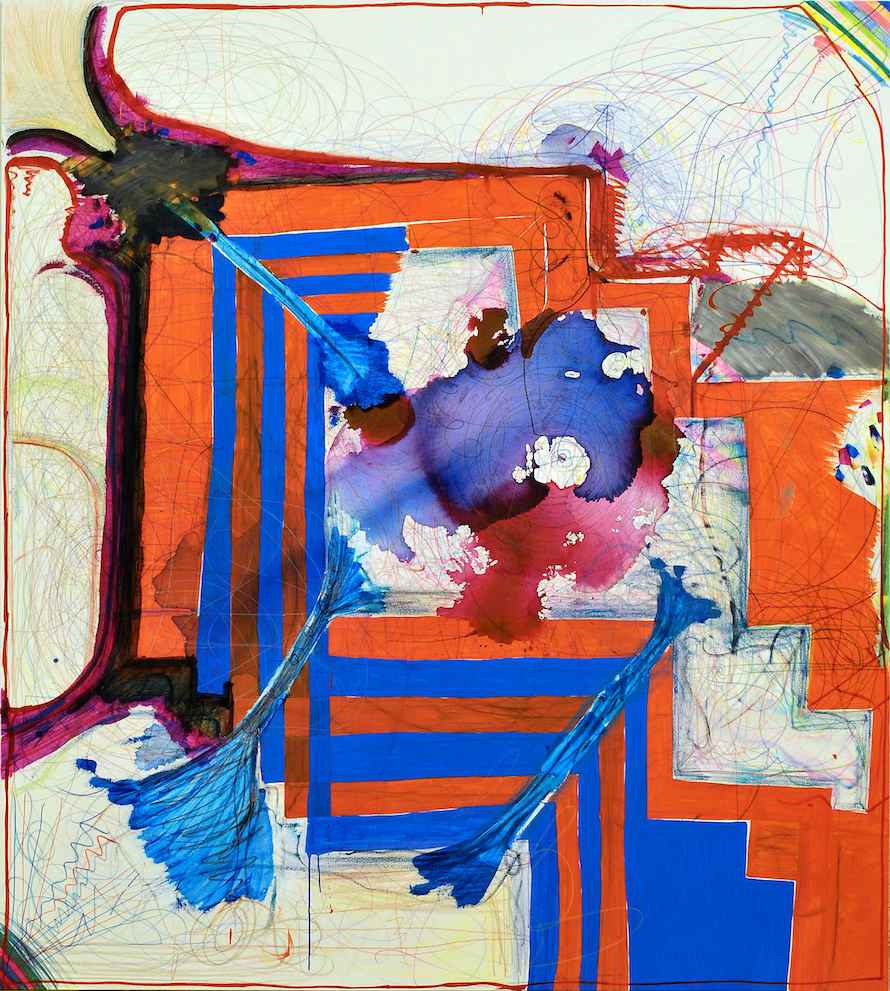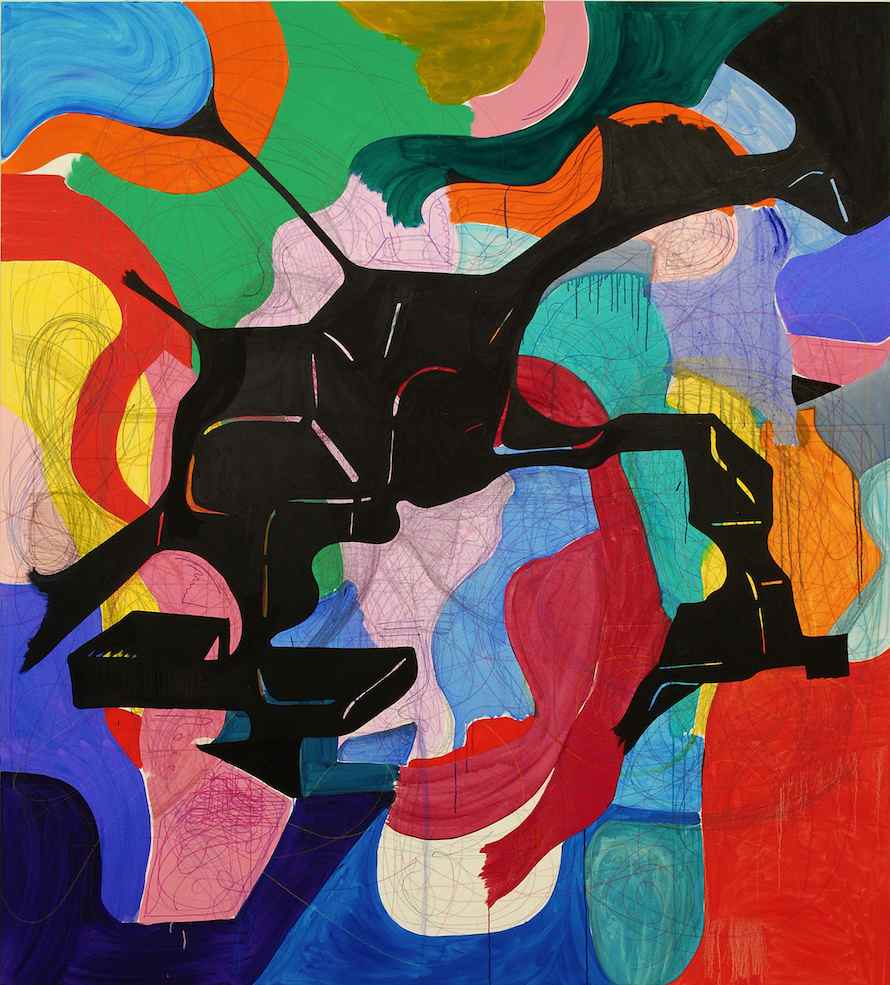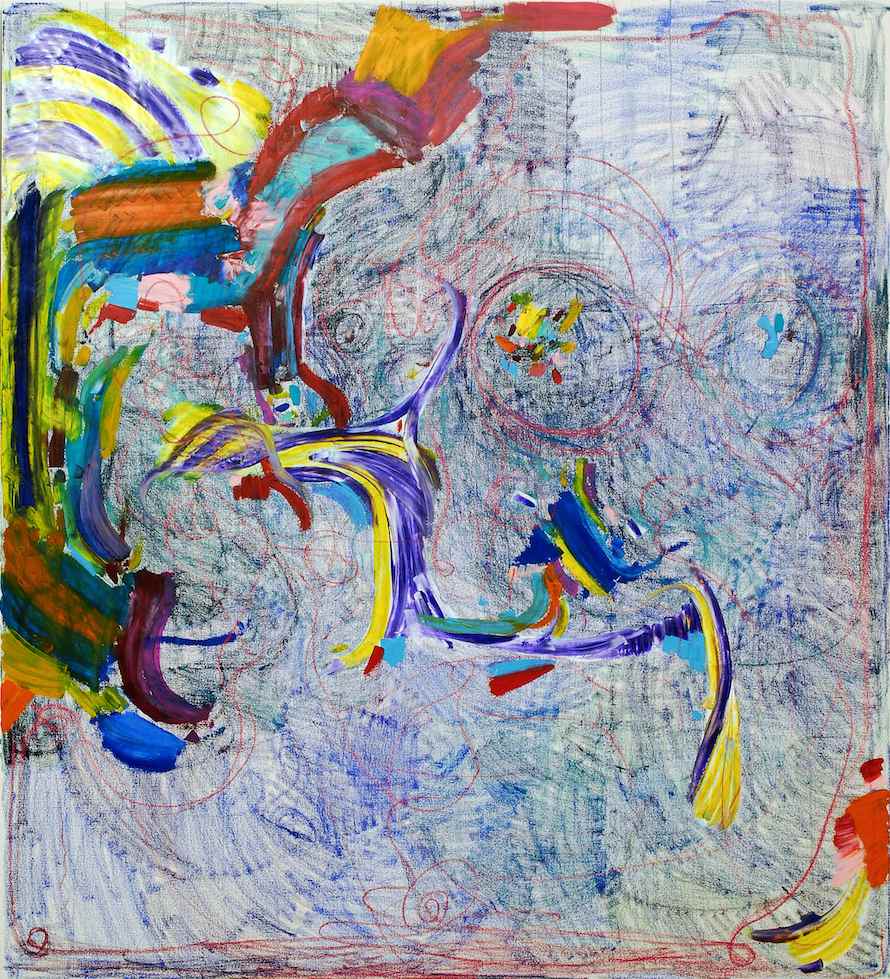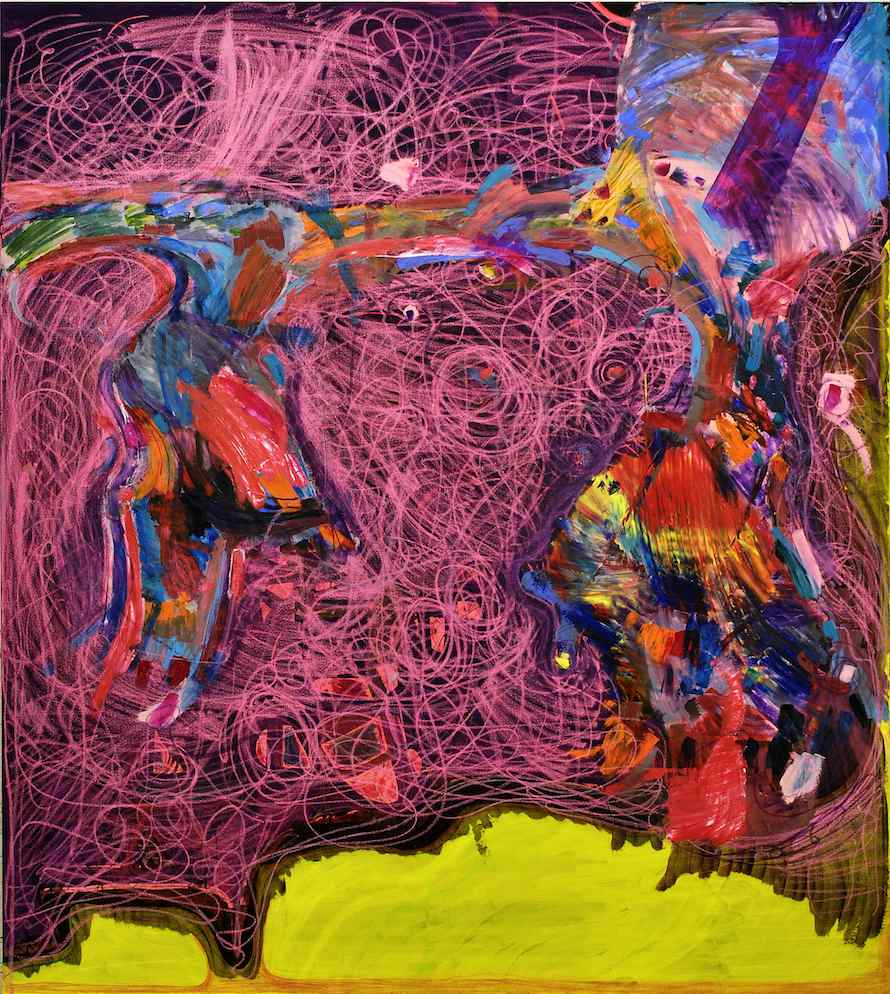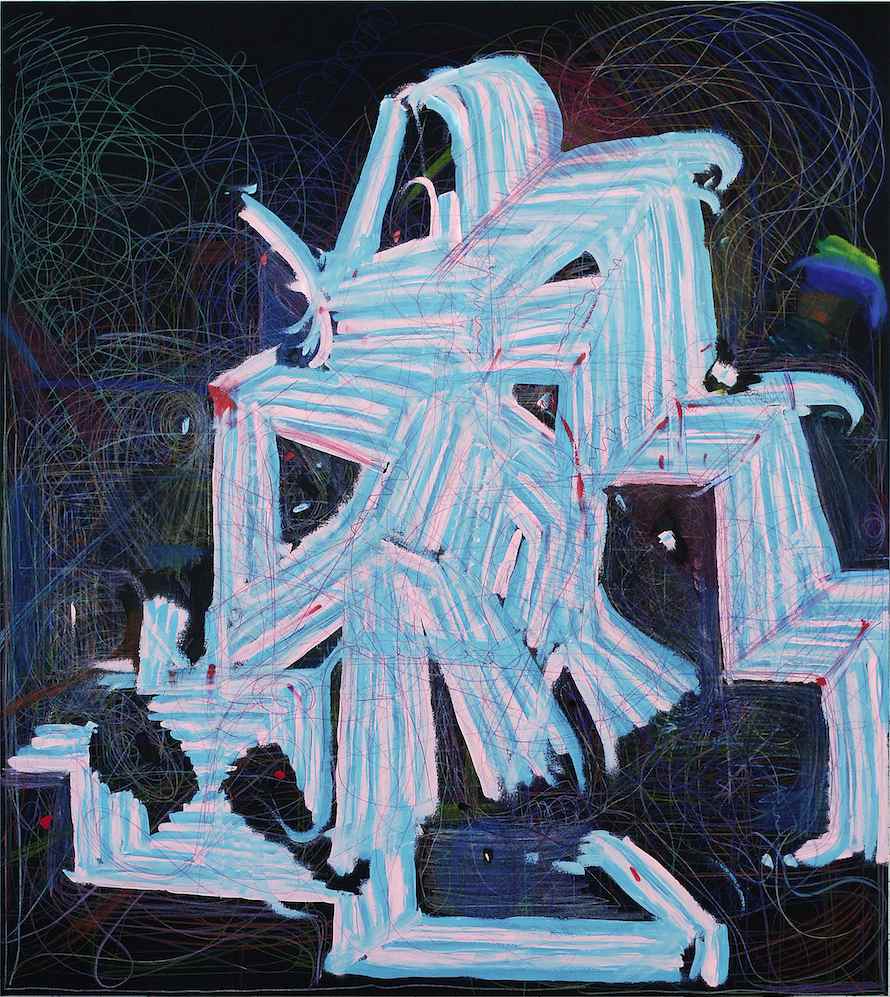Gerard Richter said, “To talk about painting is not only difficult but perhaps pointless, too.” What good is there in talking about your art?
Joanne Greenbaum:I don’t think talking about my art does much to explain it in any way. I am not good at it and most of the time quite uncomfortable using academic art-speak or just plain English to talk about what I do. I believe Richter was correct in saying that painting is its own language so leave it at that. I know that professionally one is sometimes called upon to speak about one’s art, and I do oblige, but really it usually feels so pointless to explain something that is essentially non-verbal.
TMN:I love how you keep your paintings untitled, providing no context instead of leading the viewer to a particular interpretation. When I came across your most recent pieces, I decided they looked like the internet. And obviously that’s because I spend a lot of time on the internet, not that the internet had anything to do with your process. While you’re working, do you imagine how viewers like me might interpret the finished pieces?
JG:Most of the time, I’m not thinking of a viewer. In fact, the only viewer I really think about is myself. I imagine that I am the ideal viewer to that work, and make the painting that that viewer wants to see, but really I don’t proceed and work with someone looking over my shoulder. The process of making these paintings is very incremental and layered in that I carry the painting in me for the duration of making that painting. So I am never far away from it. I see things in the paintings that maybe other people don’t see, and the elements that I put in there have a very specific painterly meaning to me. I can’t control what people see in the paintings, and I don’t want to.
I like the fact that the viewer sometimes has no idea what these paintings mean, and what they are supposed to be. I don’t mind that the conglomeration of their elements doesn’t make much sense in the real world, or even the painting world. That’s what intrigues me.
Recently I was talking with a friend about the times past when one was painting in the studio and when you took a break, you would go open the book you were reading. Now when I take a break, I open the computer. I miss the quiet times when the book was the only option. The internet is so loud.
TMN:You live and work out of the same space, and have done so for many years. Was there ever a period when you didn’t paint?
JG:I think there have not really been long periods of time when I did not paint. For many years I worked full-time at a responsible job and it was pretty exhausting, but I did manage to paint when I wasn’t there. That meant, however, that I did not have much of a personal life because I had, in a sense, two full-time jobs. I had to keep working in my studio, or else I would have been destroyed, or gone crazy by going into the office every day. I had that to keep me going, plus the job paid for my painting life. The trade-off worked for a while, but then I had to really figure out how to just do my own work. I am one of those artists who can work during difficult times as well as when things are going well.
TMN:These days you’re also creating ceramic sculptures. What do you love about this medium that painting doesn’t offer?
JG:The first thing I love about making ceramic sculptures that my painting doesn’t offer is working in a shared studio with other artists. I am isolated a good amount of time in my own studio, and going out to the shared ceramic studio—however maddening some of those people can be at times—is a different experience. One learns from seeing what other people are doing, and in fact that is how I learned. I faked it until I could do it myself.
I think the medium of clay is very adaptable to the feeling of three-dimensional drawing, and also it lends itself to a feeling of reverie. I can get lost in the actual feel of the clay without worrying about what I am making. I leave that up to chance. Over time I understand more about how to actually construct something, but I like the object-ness of the pieces and that I make these sculptures to fit on tables and shelves. I leave the bigness to the paintings. I have been enjoying the intimate nature of making small or medium objects that I can fuss over and glaze or hand-color.
TMN:When was the last time your own work made you angry?
JG:I get angry almost every day at something. Anger is a great motivator.
